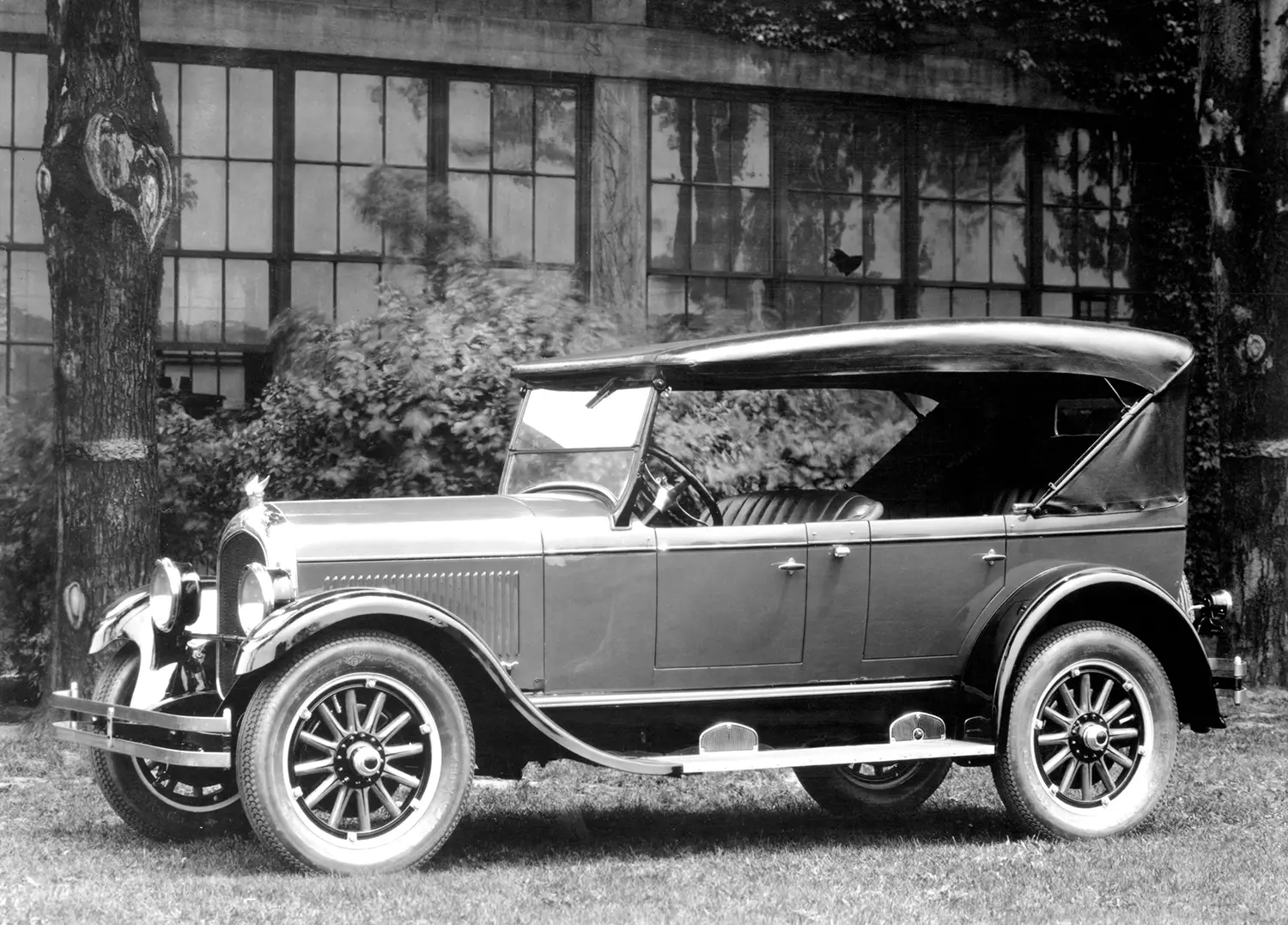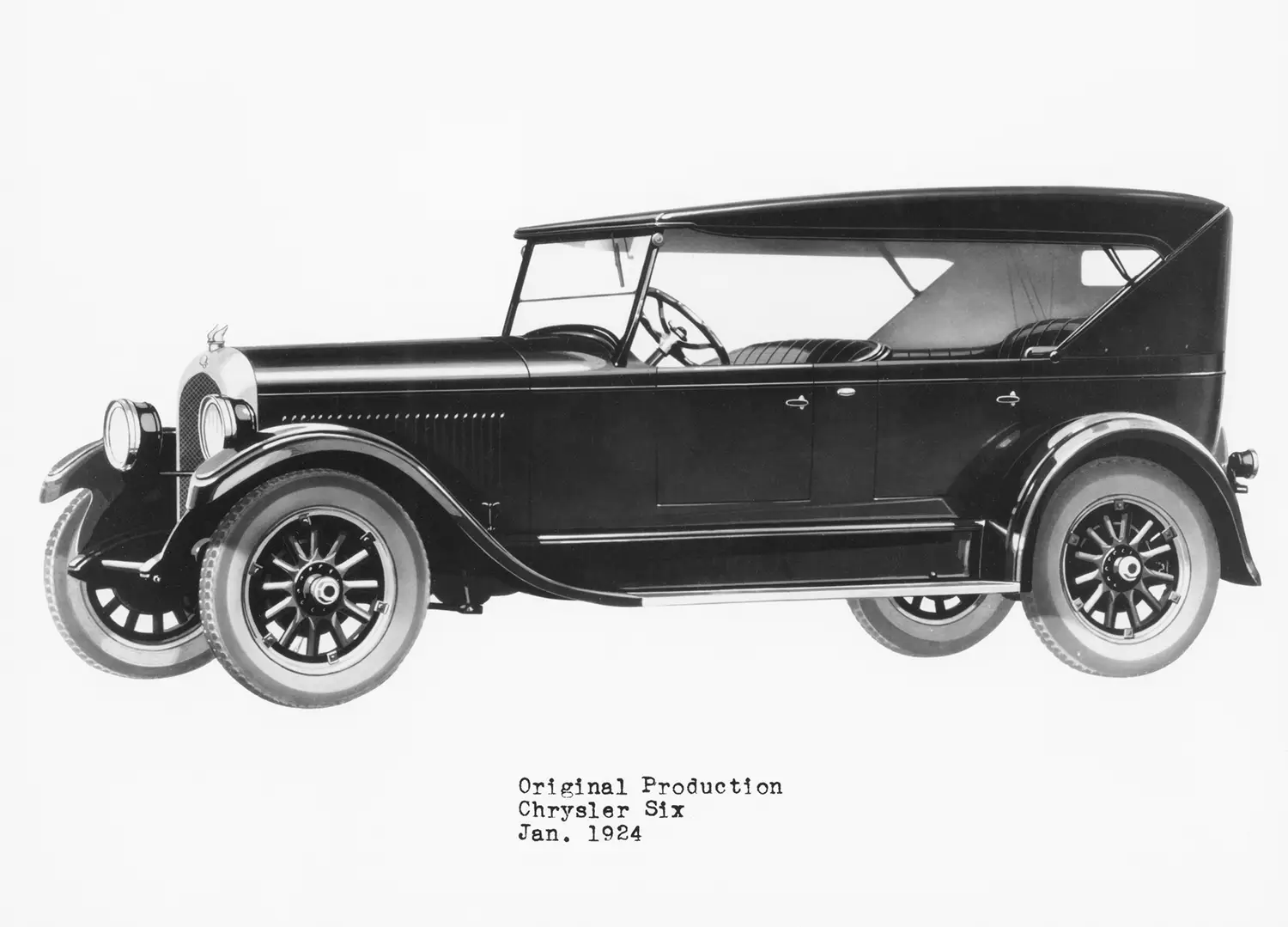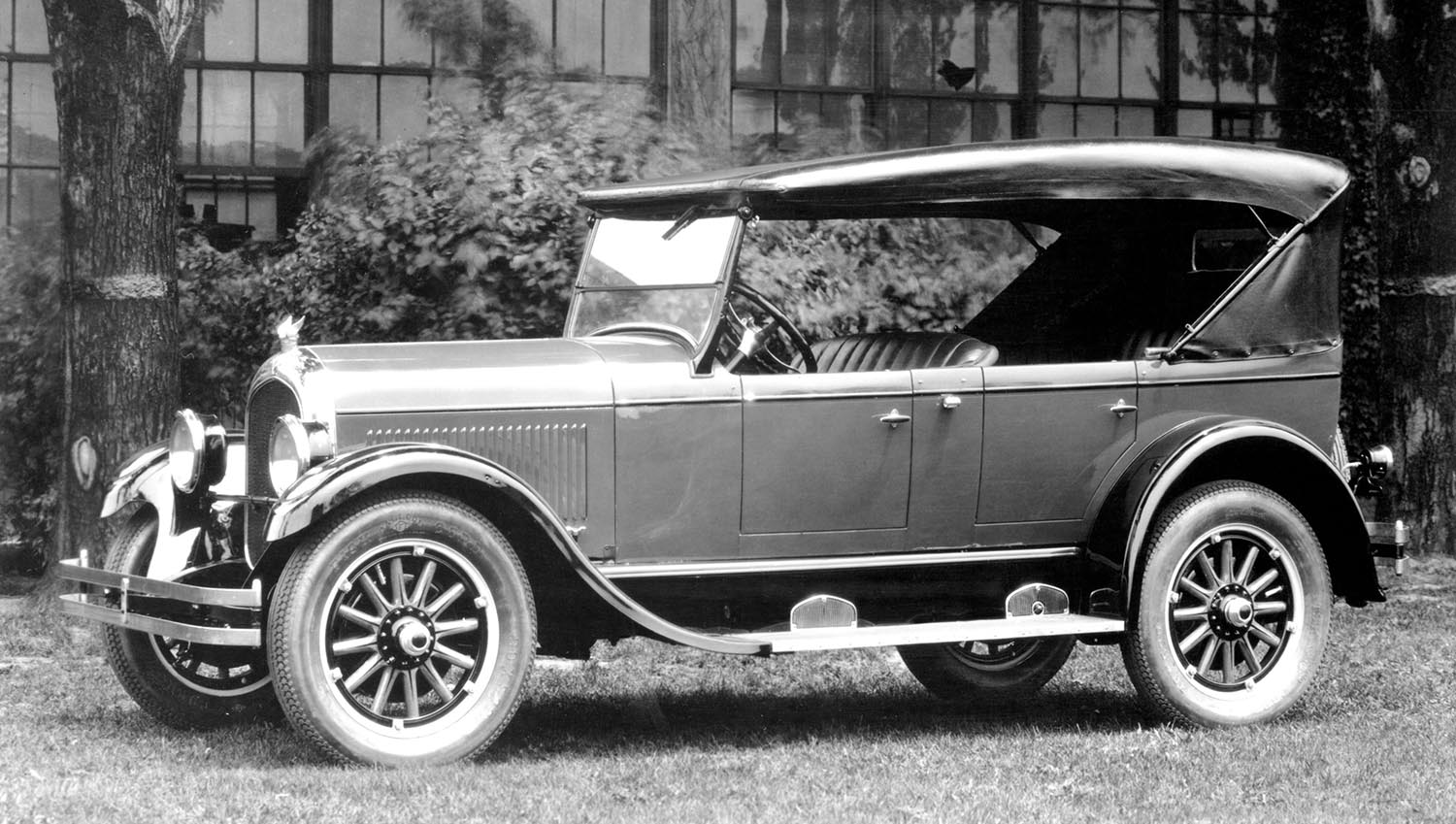
Imagine walking into a dealership in 1924. Every car on the floor looks largely the same: tall, boxy, and built on decades-old mechanical principles. Then you see it: a sleek, low-slung car that feels vibrant and utterly modern. That was the moment the industry changed forever, marked by the arrival of the 1924 Chrysler Six Phaeton. Walter P. Chrysler, armed with a team of exceptional engineers, didn’t just build a new car; he founded a company on the principle of bringing high-end innovation to the masses. The resulting Model B-70 shattered expectations and became the foundation of a new automotive giant.
A New Standard in Engineering
Walter P. Chrysler famously surrounded himself with brilliant minds, known as the “Three Musketeers.” Fred Zeder, Owen Skelton, and Carl Breer were determined to engineer a truly advanced vehicle. Their mission was to offer features typically reserved for cars costing twice as much. This vehicle was not a warmed-over design from the defunct Maxwell company. Instead, it was a clean-sheet marvel. The resulting design challenged the status quo of every competitor, from Ford to Packard.
The Bold Introduction of the Chrysler Six
The car made its public debut at the 1924 New York Auto Show. It immediately captured attention for its style and sophistication. The Phaeton body style, with its open-air seating and distinctively lower stance, epitomized the youthful spirit of the Roaring Twenties. Furthermore, the car’s design struck a perfect balance. It offered the elegance of a luxury machine but carried the accessible price tag of a medium-priced car. This potent combination created a runaway success, selling over 32,000 units in the first year alone.
Pioneering Safety with Hydraulic Brakes
One feature above all others solidified the car’s legendary status. The 1924 Chrysler Six Phaeton came standard with four-wheel hydraulic brakes. This move was revolutionary for a mid-priced car. Most competitors still relied on mechanical brakes, which were often inconsistent and required frequent adjustment. Hydraulic brakes provided far superior, more reliable stopping power. Chrysler understood that safety was not a luxury option. This commitment forced the rest of the industry to quickly follow suit.
High-Compression Power for Everyone
The innovation continued beneath the hood with the newly designed engine. The engineers understood that a lively, smooth engine was essential for performance. They utilized a high-compression L-head straight-six engine for the Chrysler Six. This decision gave the car an immediate performance advantage over its rivals. It allowed drivers to easily keep pace with more expensive, larger displacement vehicles.
Performance and Specifications
The engine in the 1924 Chrysler Six Phaeton displaced 201 cubic inches (3.3 L). This compact powerhouse produced a robust 68 horsepower at 3000 rpm. The high compression ratio of 4.7:1 was remarkable for the time. This combination enabled the B-70 Phaeton to achieve a respectable top speed of approximately 70 mph. The car’s lightweight construction and tubular front axle also contributed to its nimble handling. Power was delivered to the rear wheels via a three-speed manual transmission.
A Heritage of Detail and Value
Beyond the major mechanical breakthroughs, the car showcased thoughtful engineering. It included aluminum pistons and full-pressure lubrication for enhanced engine life. Replaceable oil and air filters were also standard. These features maximized the car’s durability and minimized maintenance for the owner. The Phaeton’s interior boasted a fully glazed instrument panel. This detail provided a more cohesive, refined look than the cluster of individual gauges used by others. Ultimately, the 1924 Chrysler Six Phaeton proved that drivers did not need to compromise on quality or innovation for the sake of price.
The Launchpad for Chrysler Corporation
The sheer success of the Chrysler Six cemented Walter P. Chrysler’s vision. Its stellar sales performance provided the capital and credibility to establish the Chrysler Corporation officially in 1925. This car was the essential first step that propelled the company into becoming one of America’s “Big Three” automakers. The 1924 Chrysler Six established a heritage. This heritage valued bold engineering, uncompromising safety, and performance accessible to a broad market.
The 1924 Chrysler Six Phaeton stands as an undisputed landmark in automotive history. It was the first “modern” American car. It introduced a winning formula of technology, performance, and value that propelled an entire company. Its legacy is etched into the very DNA of modern car design. This pioneering Phaeton forever changed how people viewed what an automobile could and should be.
Disclaimer: Content on this site is for informational purposes only. Vehicle specs, pricing, and availability may change. Always verify details with official sources before making decisions. Opinions are those of the authors.
Source: Stellantis

